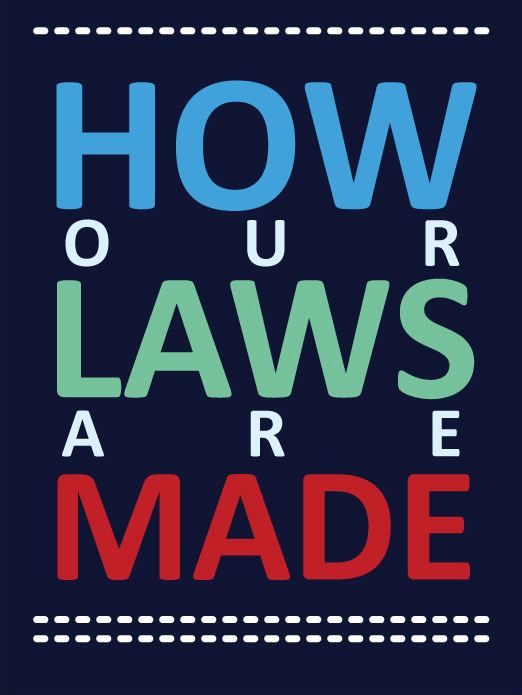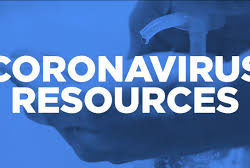We’ve all had this thought at one time or another, but were do you start ?
How an Idea becomes Law
Public laws affect society as a whole, and make up most of the laws passed by congress.
Research online : Go online to see whether legislation addressing the problem has been passed in another city or state. You can use the language of that law to help guide you to your proposed bill.
HOW A BILL BECOMES LAW: STATE LEGISLATIVE PROCESS
- The bill is filed for introduction. House bills are filed with the House chief Clerk, Senate bills with the Senate Secretary. Only members of the Legislature can file bills. They can be co-sponsored by any number of members, but the first-named sponsor on a House bill must be a Representative and on a Senate bill a Senator. The first-named sponsor is the principal sponsor and controls the bill.
- The bill is introduced (also called “First Reading”)
- The bill is referred to standing committee(s). They are called “standing” committees because they remain in place from Legislature to Legislature unless they are removed by changing the rules. House bills go to House committee(s). Senate bills to Senate committee(s). In the House the speaker decides which bills go to which committees; in the Senate the President decides. Bills can be referred to committee either on First Reading or Second Reading. If they are referred on Fist Reading, the Second Reading is a formality, does not advance the bill and is done later, on the fly. These “readings”— there are three, the Third Reading being the actual vote to pass the bill—are required by the state constitution.
- The committee(s) meet, take testimony on the bill, and vote whether to recommend that the bill “do pass” as is or that it be changed (“do pass as amended”).
- The committee recommendations are read to the House (or the Senate). These are called “committee reports”.
- If no amendments have been recommended, the leadership can put the billon the “consent calendar” by which the members by common consent agree not to debate the bill on the floor. If no member objects within a stated period to a bill being on the consent calendar (even one objection will take it off), the bill will bypass floor debate and advance directly to the vote (called “third Reading”) that will send it to the second house.
- For a bill not on the consent calendar, the whole House (or whole Senate) meets to discuss the bill and the recommendations that have been made by the standing committees. This is the famous “COW”—for “Committee of the Whole” (whole House or whole Senate). During COW, individual members can offer amendments directly; these are called floor amendments and are approved (or disapproved) by voice vote as they are offered.
- After all amendments have been voted on, the bill’s principal sponsor makes a motion that the COW recommends that the bill be passed.
- If the COW vote is in favor of recommending the bill, the bill is reprinted with the COW- approved amendments, if any incorporated into the original text. This new version is called the House (or Senate) engrossed bill. The COW votes only by unrecorded voice votes. A voice vote can be verified by a standing head-count called a “division.” If the division goes against the bill there is a roll call vote. If the roll call goes against the bill, the bill reverts to its pre-COW status—available for debate—but except in rare cases it is in fact dead and is not brought up again.
- If approved by COW, the bill is voted on (this is the “Third Reading” required by the constitution). If it passes, it goes to the second house (i.e. if it is a House bill it now goes to the Senate).
- In the second house, steps 1 through 10 are repeated, this time with the bill going to the second house’s committees, consent or COW calendar and Third Reading. If it passes the second house it comes back to the first house (its “house of origin”).
- If the second house did not amend it, the bill now goes to the governor.
- If the second house did amend it, the house of origin votes on whether to accept the second-house version of the bill.
- If the house of origin accepts the second house’s changes, it votes on the bill again (it’s called “Final Reading”), and if the bill passes, it goes to the governor. This second votes is required because the house of origin never has voted on this version of the bill.
- If the house of origin rejects the second house’s changes, its presiding officer (speaker in the House, president in the Senate) appoints a few members, usually including the principal sponsor, to a committee to meet with a few members from the second house appointed by that house’s presiding officer and resolve the differences. This is called a conference committee.
- The conference committee usually recommends approval of one of three version of the bill: 1) As it passed its house of origin, 2) As it passed the second house, or—and this is common—3) With new amendments that create a version of the bill that neither house has voted on.
- The conference report (the version of the bill recommended by the conference committee) is submitted to both houses. A voice vote in each house and then a final vote in at least one house must approve it: If the conference committee recommended the House version, then the Senate must vote a final time (because it never voted on the House version); if it recommends the Senate version then the House must vote a final time; and if it recommends a brand-new version, both houses must vote a final time.
- After approval of the conference report and all required final votes, the bill is sent to the Governor by its house of origin.
- The Governor must act on the bill by a prescribed deadline. If the Governor does not sign the bill into law or veto it, the bill is filed into law automatically.
How to pass Local Ordinances
Click Here ( Note this is animal activist site but the process is the same)
This is an easy to read and understand book that explains the legislative process for local, state, and federal laws. Only 24 pages written in 2012





